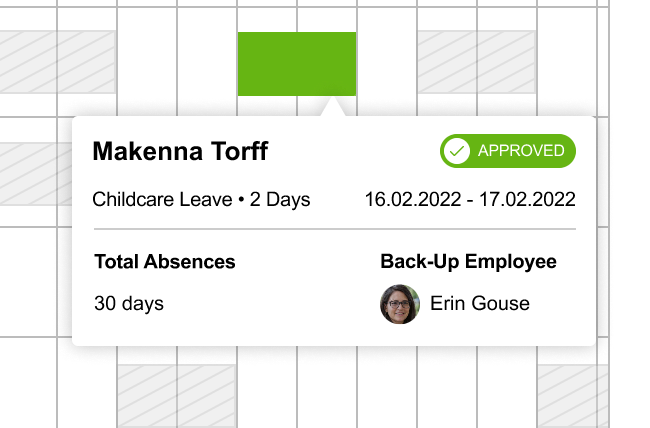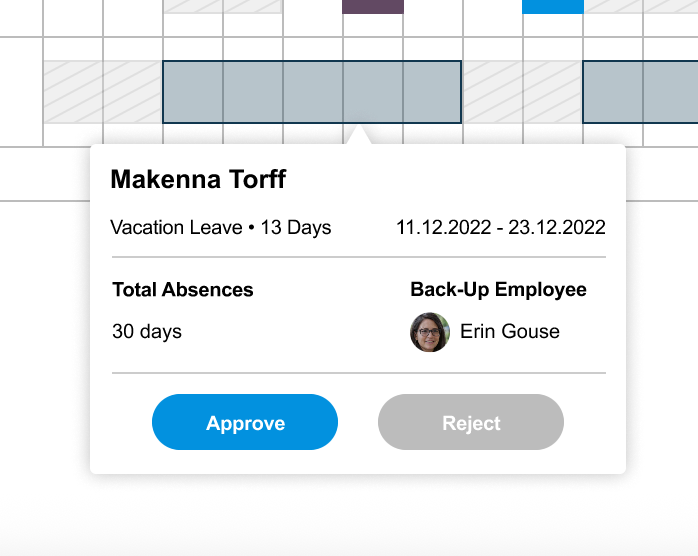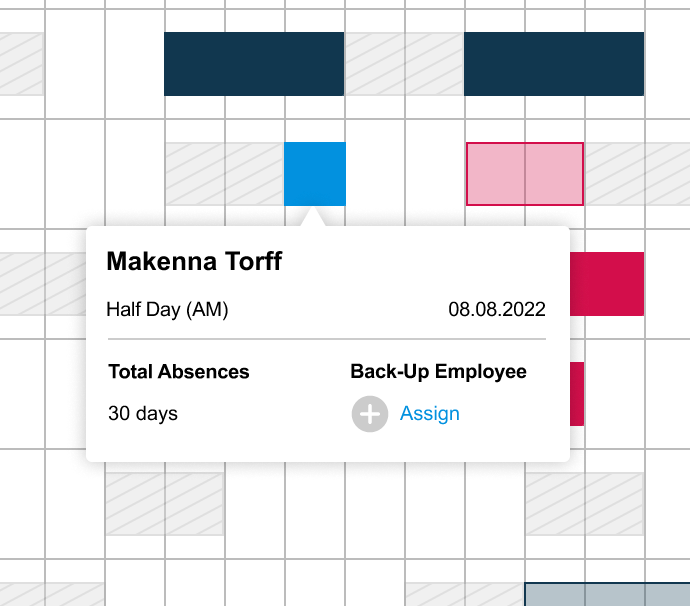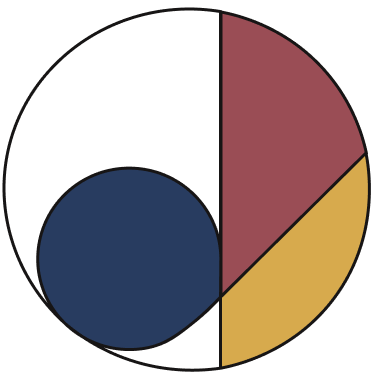Project Info
Client:
Bayer
Bayer
Role:
UI/UX Designer
UI/UX Designer
The Time and Leave of Absence platform was designed as a one-stop solution for people leaders to efficiently manage their team’s attendance and leave-related processes. Leaders could track attendance, approve planned absences, assign back-up employees, verify medical certificates, download timesheets, monitor clock in/out data, and generate reports for vacation or sickness absences—all within a single interface.
My role was to conceptualise and design a streamlined dashboard that matched Bayer’s branding. One of the main challenges was balancing high-level visibility across multiple teams with the need for simplicity. To solve this, I designed an employee-level view with intuitive toggling between team members, ensuring leaders could access both granular and big-picture perspectives without being overwhelmed.
Original Design and Process
Before the platform was created, people leaders relied heavily on Excel spreadsheets to track their team’s absences. This manual approach lacked an integrated interface for time and leave management, and approvals were often handled separately through emails or calendar notes. The process was not only fragmented but also prone to errors, making it difficult for leaders to have a reliable overview of their team’s availability.
When we began ideation, we studied the original Excel template provided and recognised the importance of retaining its core functionality—particularly the yearly overview and legend for different absence types. To modernise this experience, we sketched out initial concepts to explore how a digital dashboard could replicate the familiarity of Excel while improving usability. These sketches became the foundation for our wireframes, which we then refined into high-fidelity mockups that aligned with Bayer’s branding and design elements.




Overview Features
Absences Overview
The Absences Overview provided year-round visibility into each employee’s leave history, enhanced by interactive tooltips displaying key details such as approval status, leave balance, and date ranges. A legend was included to help people leaders quickly differentiate the types of absences taken, such as vacation, medical, or other leave categories. This created a clear and organised view that made it easier to manage team availability at a glance.
The Absences Overview provided year-round visibility into each employee’s leave history, enhanced by interactive tooltips displaying key details such as approval status, leave balance, and date ranges. A legend was included to help people leaders quickly differentiate the types of absences taken, such as vacation, medical, or other leave categories. This created a clear and organised view that made it easier to manage team availability at a glance.
Attendance Overview
The Attendance Overview gave people leaders a comprehensive look at team members’ clock in/out records, with clear indicators of missing or incomplete entries. In addition to tracking attendance patterns, leaders could also download and verify medical certificates directly through the platform. This ensured greater accuracy, compliance, and accountability across the team’s attendance management.
The Attendance Overview gave people leaders a comprehensive look at team members’ clock in/out records, with clear indicators of missing or incomplete entries. In addition to tracking attendance patterns, leaders could also download and verify medical certificates directly through the platform. This ensured greater accuracy, compliance, and accountability across the team’s attendance management.
Shared Features
Both the Absences and Attendance sections were supported by quick-action tools that streamlined daily management tasks. A notification panel provided a real-time snapshot of who was absent that day, while the “Needs Approval” panel allowed leaders to efficiently review and approve pending requests. Additionally, a back-up assignment feature ensured continuity by designating substitutes when key team members were unavailable.
Both the Absences and Attendance sections were supported by quick-action tools that streamlined daily management tasks. A notification panel provided a real-time snapshot of who was absent that day, while the “Needs Approval” panel allowed leaders to efficiently review and approve pending requests. Additionally, a back-up assignment feature ensured continuity by designating substitutes when key team members were unavailable.
Reports
The Reports screen was designed to give people leaders a clear, data-driven view of their team’s absence and attendance patterns. Infographics such as pie charts and bar graphs were used to help visualize trends in how leave was taken—planned versus unplanned—and highlight overall team behaviour across the year. This allowed leaders to quickly identify patterns and anticipate potential resourcing issues.
The report also provided a breakdown of remaining entitled days for each team member, which supported better workforce planning and allocation of resources, especially for project-based teams. Unplanned absences were flagged as alerts, prompting leaders to address potential well-being concerns during employee check-ins. To ensure scalability across Bayer’s global teams, the page was designed modularly, with space to include links to country-specific reports such as overtime, timesheets, or regional scheduling requirements.
